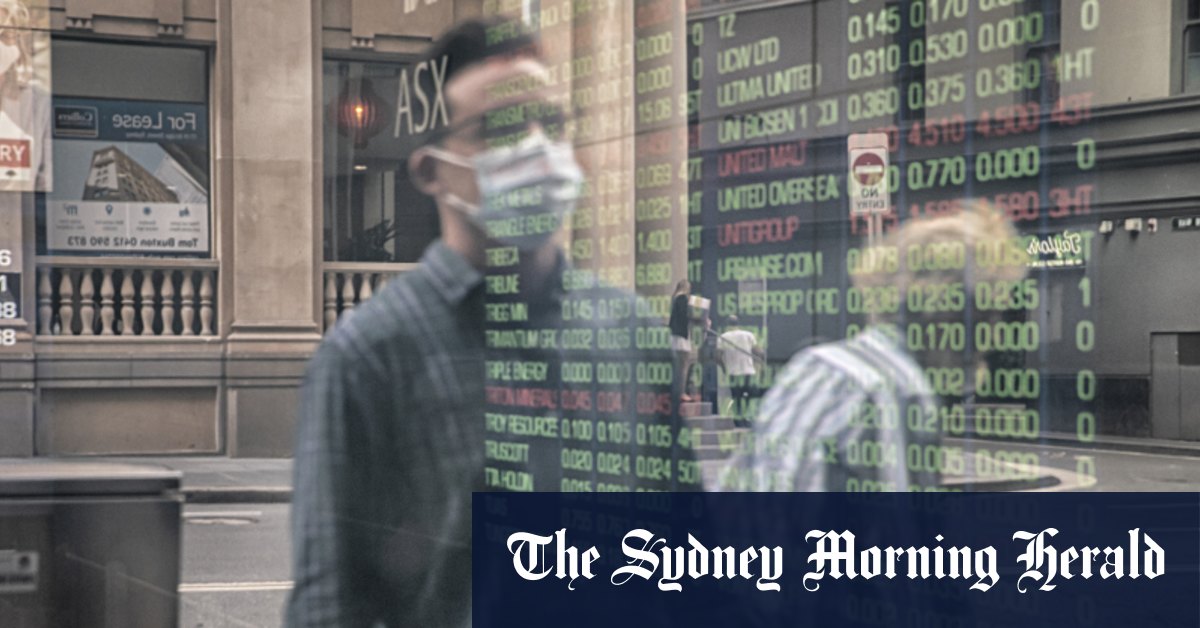Markets poised to start new year on back foot

The Australian sharemarket is likely to start the first trading day of the new year on the back foot, after shedding 6 per cent over the past 12 months, as investors remain watchful of China’s reopening, inflation and the prospect of global recession.
The S&P/ASX 200 closed at 7038.7 points on Friday – its final day of trading last year – up 18.6 points, or 0.3 per cent, from a 20-day low on December 29.
Over the course of the year, however, the index lost 6.3 per cent, weighed down by the information technology, real estate and consumer discretionary sectors. Among several factors, a series of cash rate hikes by the Reserve Bank in 2022 lifted borrowing costs and mortgage repayments, dampening investments in higher-risk technology stocks, and reducing household demand.
Energy stocks and utilities led the charge in 2022, driven by soaring prices which came from dwindled supply, largely as a result of the war in Ukraine. Whitehaven Coal flagged a record $3 billion annual profit, and 260.9 per cent growth over the year, while Woodside surged 61.6 per cent.
Looking to the market opening on Tuesday, lead portfolio manager for the Tribeca Alpha Plus Fund, Jun Bei Liu, said to expect a “red day” in trading.
“It will be a little weaker when markets open,” she said. “US markets faded towards the end of the year and the Australia market tends to follow them.”
Investors are likely to be nervous, she said, as a range of factors remains up in the air. “China’s reopening is faltering, infections are picking up and there are fears about global recession and inflation.”
Following a strict zero-COVID policy, the Chinese government has relaxed restrictions, despite an elderly population with a disproportionate number of people who have yet to receive three doses of a COVID vaccine. While the prospect of a global economic powerhouse reopening has upside potential for commodity-exporters such as Australia, concerns about hospital capacity and rising infection rates going into the Chinese New Year, are contributing to investors’ uncertainty.
AMP chief economist Shane Oliver also expects the market to open in the red on Tuesday and for conditions to remain “fairly rough” in the opening months this year.
“There’s always uncertainty around this time because of low volumes,” he said. “But there’s likely to be a negative start to the year because of concerns around surging COVID cases in China, interest rates which weigh on profit expectations, and fears of recession which will stay for some time. I suspect we’re in for a rough ride for a while.”
However, commodity companies may be spared the initial drop in share values, Oliver said, because “commodity prices, such as those of iron ore, are holding up well.”
Even as people return from their holidays, Liu anticipates a fairly anaemic market over the next few months. “The market will go downwards to begin with,” she said.
“There’ll be a bit more focus on earnings as the reports come out, but they’re not going to get people excited,” she said. “There are earnings downgrades to come, consumer spending has faltered and Christmas hasn’t been as big as expected.”
But both Liu and Oliver said there would likely be improvement after the March or June quarter this year.
“As the year proceeds, markets will start to look healthier because inflation will start to diminish, taking pressure off interest rates,” Oliver said.
“China’s reopening will probably be a bit like what we experienced with the Omicron wave here. There should be more demand for our commodities from China and better supply of goods into Australia from March onwards.”
Despite a drop in the index last year, the Australian sharemarket has been on a positive trajectory for most of the last decade, standing 51 per cent higher on December 30, than it was at year’s end 10 years ago.
With Billie Eder
Most Viewed in Business
Source: Thanks smh.com